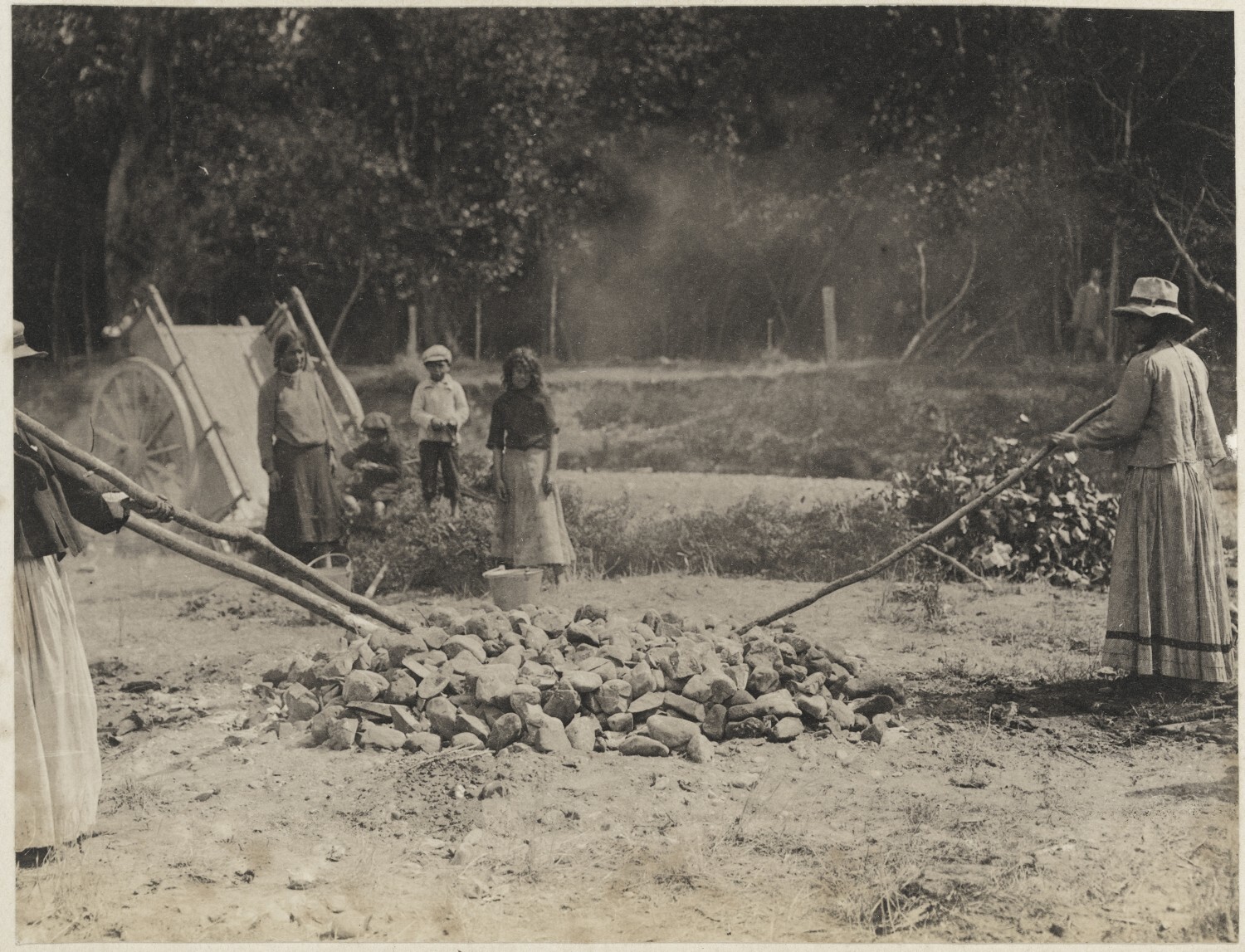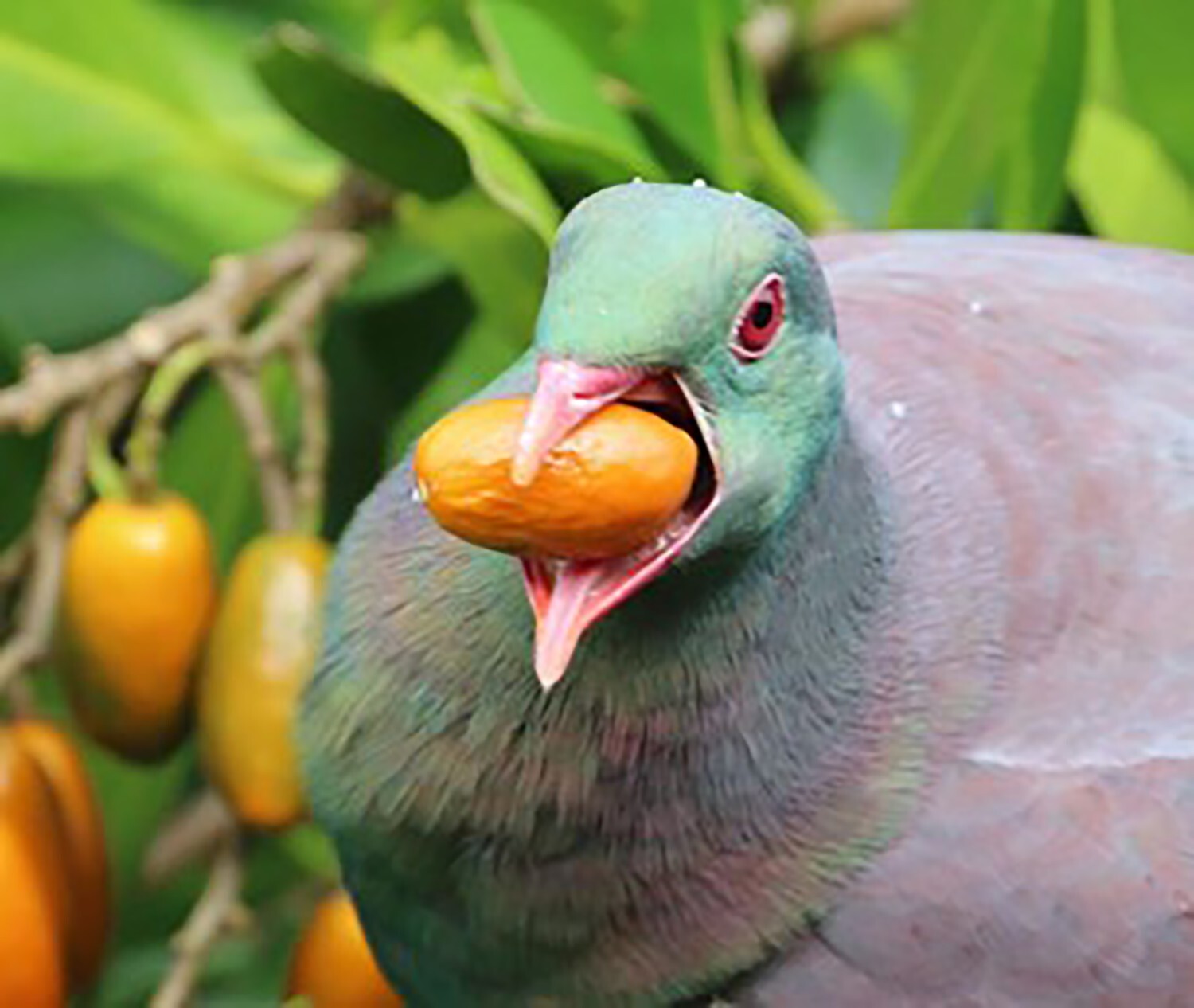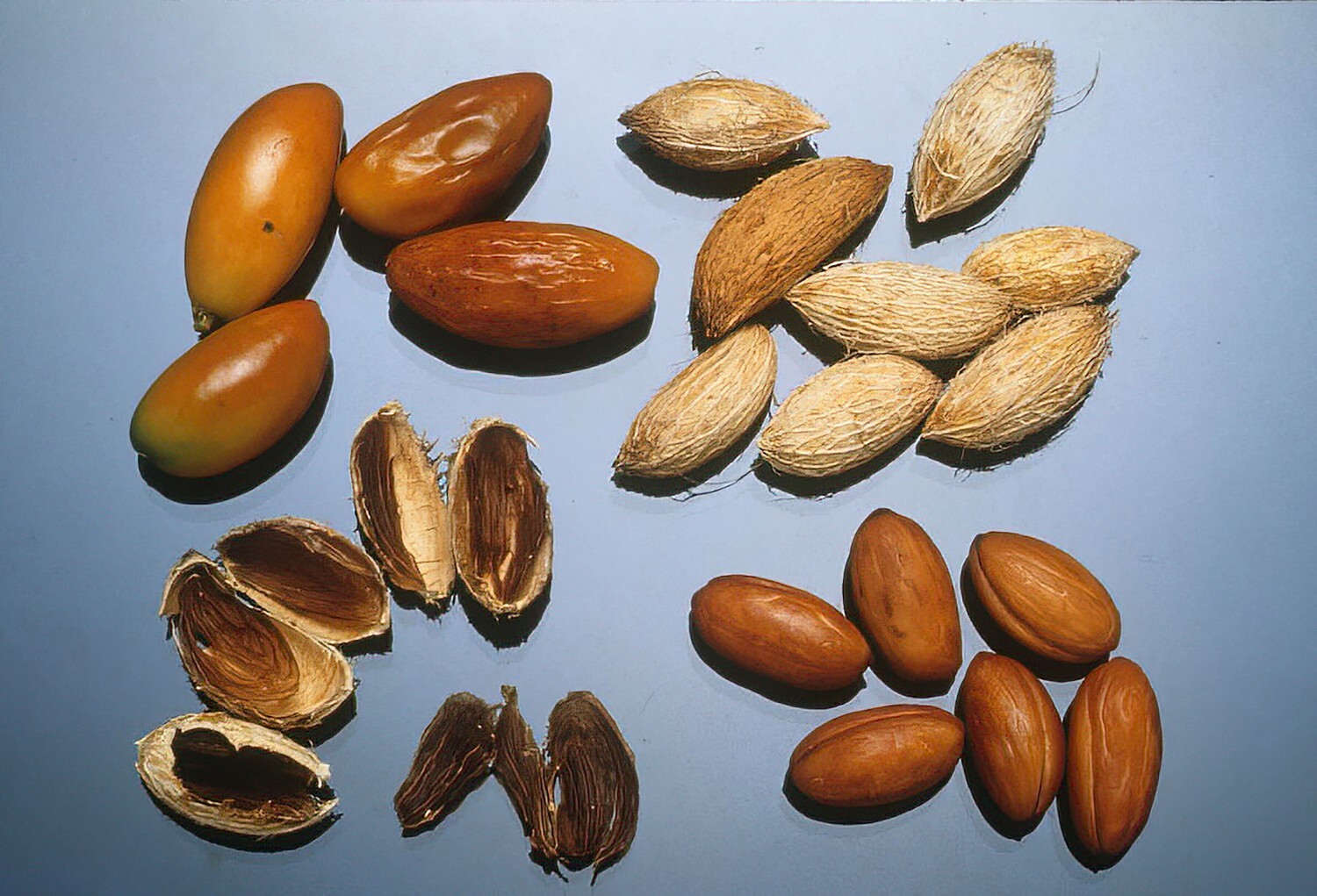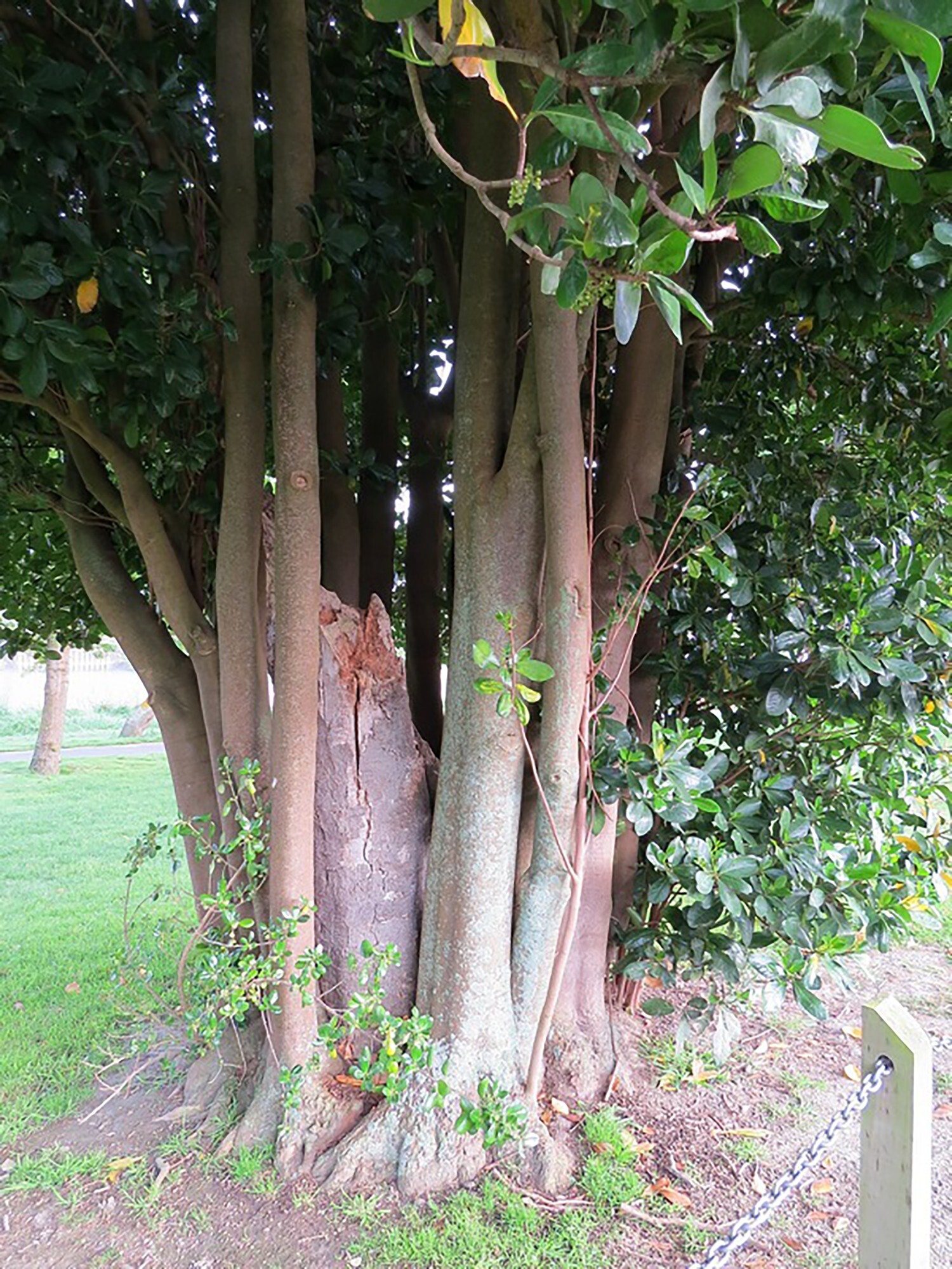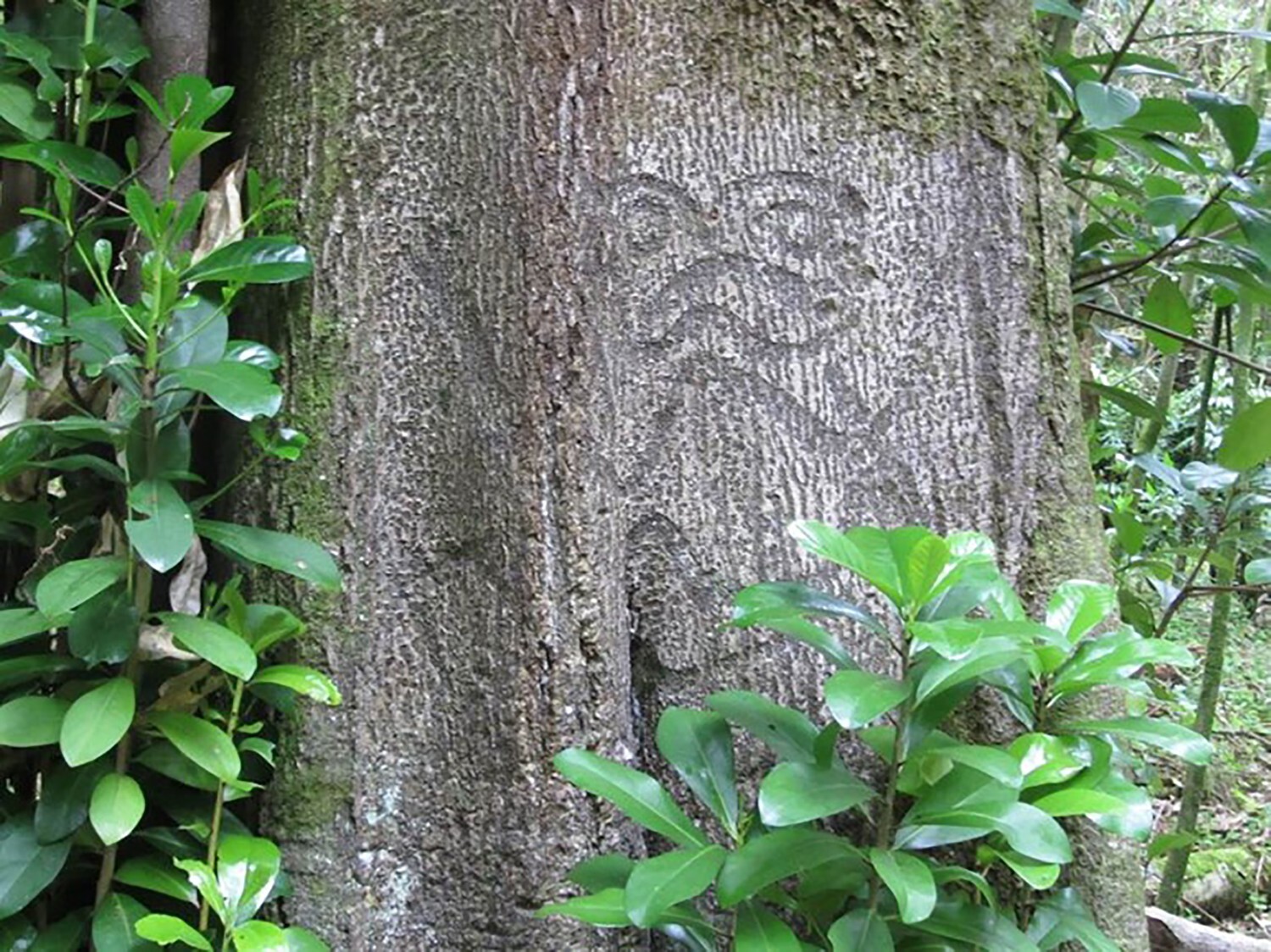Karaka (Corynocarpus laevigatus)
Karaka is a New Zealand endemic tree species with a rich history that is intertwined with humans. There has been much debate around its origins and whether it evolved in New Zealand or was brought here by early Polynesian explorers. For Māori and Moriori (who call the species kōpi), karaka is a taonga species with significant spiritual and cultural importance – including being an important source of food, particularly in winter. … On Rēkohu (Chatham Island), karaka trees were adorned with carvings known as rākau momori, which are unique to Moriori culture and globally significant. Much of the current southern distribution of karaka is thought to originate from Māori translocation as part of its cultivation. Karaka groves were planted near pā sites and carefully tended.
…
Karaka trees are usually single-stemmed, but readily resprout from epicormic buds, especially near the base if the main trunk is damaged. The species is relatively long-lived for an angiosperm, with Burstall and Sale and Stowe suggesting a maximum age of >500 year.
…
Karaka is capable of producing fruit from about ten years of age or earlier. Seeds tend to germinate rapidly after (ripe) fruits have been shed, and seed viability can be as high as 90%. ... However, the fleshy mesocarp and husk can buffer seeds from desiccation, which may allow seeds to persist on the soil for several months before germinating. Burrows suggested that ideal conditions for karaka seedling establishment are if seeds are dispersed to moist, shaded sites, or are shallowly buried in the soil or beneath leaf litter.
…
The large size of karaka fruit means that kererū and parea (endemic wood pigeons of the genus Hemiphaga) are the only extant bird species with a gape large enough to consume and disperse karaka fruits.
…
Karaka is relatively frost-intolerant, and in northern New Zealand it generally occupies warm, moist sites close to the coast in mid-successional forests, where it co-occurs with a range of other tree and shrub species such as pūriri (Vitex lucens), taraire (Beilschmiedia tarairi), and kohekohe (Didymocheton spectabilis) (Wardle; Platt; Atherton). On Great Mercury Island, Wright described karaka as forming part of the sub-canopy in pōhutukawa (Metrosideros excelsa) coastal forest, along with pūriri, tawāpou (Planchonella costata), kohekohe, lancewood (Pseudopanax crassifolius), māhoe (Melicytus ramiflorus), and a range of shrub species. Ogle described karaka occurring in mixed stands with tītoki (Alectryon excelsus) and māhoe on sand dunes of the Poutu Peninsula in Northland, sometimes with tōtara (Podocarpus totara) and kānuka (Kunzea spp.), but nowhere dominant.
…
Karaka was an important food crop for the ancestors of modern Māori and Moriori (Maxwell and Smith). It replaced some of the Polynesian crops that were brought to New Zealand but failed to thrive in the colder climate. Karaka fruits provided a good source of carbohydrates (58% per fruit) and protein (11% per fruit), especially in lean winter months when other foraged food options were scarce. The fleshy outer part of the ripe fruit is pungent and edible, but the kernel contains a poisonous alkaloid (karakin) and can cause paralysis. Māori and Moriori learned to process karaka kernels in a way that made them safe to eat, and this practice continues to this day in some parts of New Zealand. There were a number of processing methods used for karaka, usually including boiling or steaming for a prolonged period and then soaking in running water (for many days or even weeks), before being dried and roasted. These detoxified, dried kernels, known as ‘Māori peanuts’ and sometimes ‘kōpīa’, were useful while travelling as they were light to carry and did not deteriorate easily. They were also important in traditional ceremonies and in formal exchanges between tribes. To make flour, the processed kernels were sundried until the outer husk came off, and the nut was then pounded into flour, mixed with water and cooked. The skill of knowing how to turn the toxic kernels into non-toxic food was hugely important in a society with limited food stores.
The significance of karaka to Māori and Moriori, particularly as a food source, is also reflected in the writings of early European historians in New Zealand. For example, Colenso wrote that the karaka was ‘of inestimable value to the Maori as a common and useful article of vegetable food, second only in place to their prized kumara tuber’. Skinner and Bauke reported that karaka was ‘ … most relied upon as food to be preserved for winter use …’ on Rēkohu (Chatham Islands). Best and Andersen reported that
Horehore is a term applied to the covering of the kernel, which flesh is soft and mealy when the berry is ripe; the ripened berry is of an orange colour. When a native speaks of karaka horehore he means the berries of the karaka having this meal still adhering to the kernel. The prepared kernels used as a food-supply are called kopia, while kopi is another name for the tree.
Graham wrote of a Ngāti Awa informant by the name of Potene:
He had been applied to for some kope kotero (karaka berries) steeped in boiling water and in a state of fermentation (maaka). This concoction was esteemed as a highly delectable relish (kinaki), eaten with or without other foods. Potene was a connoisseur in those matters, and an adept in the preparation of kope kotero. But a particular karaka tree produced in Potene's opinion, the only kakano (berries) amenable to the process of kotero. Hence his seasonal queue of clients applying for a supply of his kope kotero.
However, the evidence for karaka being a staple is limited, in particular when contrasted with the other starchy staples of kumara (Ipomoea batatas), bracken fern (Pteridium esculentum) root and the growing apices of tī (Cordyline australis). Early European visitors made little reference to karaka when describing the typical plants eaten by Māori, such as Angas, who mentioned kumara, taro (Colocasia esculenta), fern root, tree fern (Cyathea and Dicksonia species), nīkau (Rhopalostylis sapida), tī and kiekie (Freycinetia banksii) but not karaka. Archaeological evidence is also limited, and it is not known where or how karaka fruits were stored by Māori and Moriori. Also, Best suggested that it was only used in appreciable quantities ‘in some districts’. In summary, there is no doubt that karaka was a valued food item, but this was probably location specific.
In times past, many elements of the natural landscape contributed to food and rongoā (traditional medicines), which supported people’s health and well-being. Karaka was not particularly renowned for its rongoā value other than in nutrition, but it did have some uses; the shiny, upper side of the leaf was applied fresh to heal broken or infected skin, whereas the dull underside of the leaf was used to draw an infection out. A body wash was also made from boiling leaves of both karaka and ngaio (Myoporum laetum) leaves and was used to relieve shallow pain such as in bruising.
Karaka trees were also well recognised as landmarks or tohu to indicate camp sites, mahinga kai (food gathering) sites and bird snaring sites, and other tribal locations and boundaries. Karaka fruits were also used as attractants for bird snaring. Coastal iwi (tribes) were more familiar with the tree than inland tribes. Karaka was purposefully planted in groves near settlements and managed from seedling to maturity for its food value. These trees were meticulously cared for and moss and mould was regularly cleaned off them to ensure a good fruiting season. Some of these groves were extensive, such as one that covered 6 ha on the south Wellington coast, and another that extended for ‘half a mile’ along a Wainuiomata valley).
Establishing new plantations of karaka outside its natural range may not have been easily achieved. Much speculation exists regarding the method of growing new plants either from seeds, clonal cuttings or as transplants , but it is generally thought that transplanting wild seedlings was the most common form of establishing new trees. In an effort to reduce the juvenile growth period, which can last up to 10 years, transplanted seedlings would be left to settle and in future seasons have strips of bark taken off them to encourage flowering and seed setting through stress. There is also evidence that planted karaka trees had been especially selected to bear larger fruits than those found elsewhere, both on mainland New Zealand and on the Chatham Islands .
Karaka trees were often named individually or as a grove to secure the role of the tree or grove in the whānau (extended family group), hapū (kinship group) and iwi (tribe) relationship with Papatūānuku (the Earth mother). Trees were named and revered for their reliable harvest each year. The whakapapa (lineage) of the trees was known and retained across the generations as old plantations were replaced with new ones. The kaitiaki or guardians of these trees had the responsibility to observe and ensure their wellbeing throughout the year, not just at the seasonal harvest period. Laing and Blackwell suggested that karaka had ceremonial use but did not elaborate on which part of the tree or how it was utilised. Graham identified a karaka tree within the Waikato region known as Te Iringa o Okaroa, used for hanging the bodies of the deceased.
Karaka was also known for producing wood of suitable quality for making tools, and there are also anecdotes suggesting that the wood was used for construction purposes including waka building. On the other hand, Wardle and Platt report that karaka wood is easily split, of low durability and of little value other than for firewood. Similarly, in a study of the wood anatomy of karaka, Patel agreed with Kirk’s assessment of karaka wood as non-durable, and suggested that this could be because “it consists of a large proportion of parenchymatous tissue whose carbohydrate contents would provide a readily available food source for the establishment of wood-destroying organisms”. Thus, it is perhaps the tree, rather than the wood quality, that is reflected in the following whakataukī: Anei ngā mea i whakataukitia ai e ngā tūpuna, ko te kaha, ko te uaua, ko te pakari, ko te kaha i te toki, ko te uaua i te pakake, ko te pakari i te karaka. Here are the things valued by the ancestors, it is the strength, the vigour, the sturdiness, it is the strength of the adze, the vigour of the whale and the sturdiness of the karaka tree. Moriori also used karaka wood to smoke and preserve food (Kerridge).
Karaka has additional emotional and spiritual significance for Moriori. Moriori inscribed ancestral figures and motifs on the bark of karaka trees, creating a unique, globally significant art form known as rākau momori. These carvings (which are actually created by bruising or etching, rather than carving the bark) are complex and diverse portrayals of ancestors and events – many of them memorials for departed loved ones (Solomon and Thorpe). Rākau momori also feature stylised images of birds, fish, seaweed, trees, seals, and other objects, and provide one of the few remaining links to Moriori culture and karapuna (ancestors). Rākau momori were once found in the extensive karaka groves over much of Rēkohu (Chatham) and Rangiaotea/Rangiauria (Pitt) Islands. However, most of the karaka forests with rākau momori have been cleared for farming over the past 150 years, and the few remaining are under threat from grazing and browsing animals, wind exposure and storm events, vandalism, and from a plant pathogen that causes crown die-back, bark disintegration and root rot. Many of the remaining rākau momori are barely visible to the naked eye because the markings slowly disappear as the trees grow, which sadly means the rākau momori will eventually be lost. In 2011 the difficult decision was made to remove eight of the trees (and another eleven in 2013) to preserve them. There is now a rāhui (restriction of access) on the groves because of their fragile state and urgent work is underway to protect the few remaining engraved trees, including restoring wind-resistant forest edges, building windbreaks, excluding stock, and controlling pests. Additional work to digitally scan the remaining rākau momori is also underway.
Within te ao Māori (the Māori world), there is always an ecosystem that aligns to significant trees and that ecosystem would be read in relation to the health of the tree and surrounding resources. Different birds would feed from karaka trees at different times of the year. For example, tūī (Prosthemadera novaeseelandiae) and korimako (bellbirds; Anthornis melanura) were known to visit during flowering to seek out nectar in the late spring (August in the north of the North Island through to around November in the top of the South Island). Karaka fruiting is a sign that kererū and kiore (Rattus exulans) will soon be at their best for harvesting, having fattened themselves up on karaka fruits (Kerridge). During late summer kererū feast on the ripe fruits and disperse the seeds. Other smaller birds such as toutouwai (North Island robin; Petroica longipes), tauhou (silvereye; Zosterops lateralis) and pōpokotea (whitehead; Mohoua albicilla) forage on and around karaka for insects. These floral and faunal life cycles around the dominant tree species such as karaka were always observed for their nuances in responding to environmental pressures; they were the tohu (signs) which informed the communities of old.
Loading comments...
